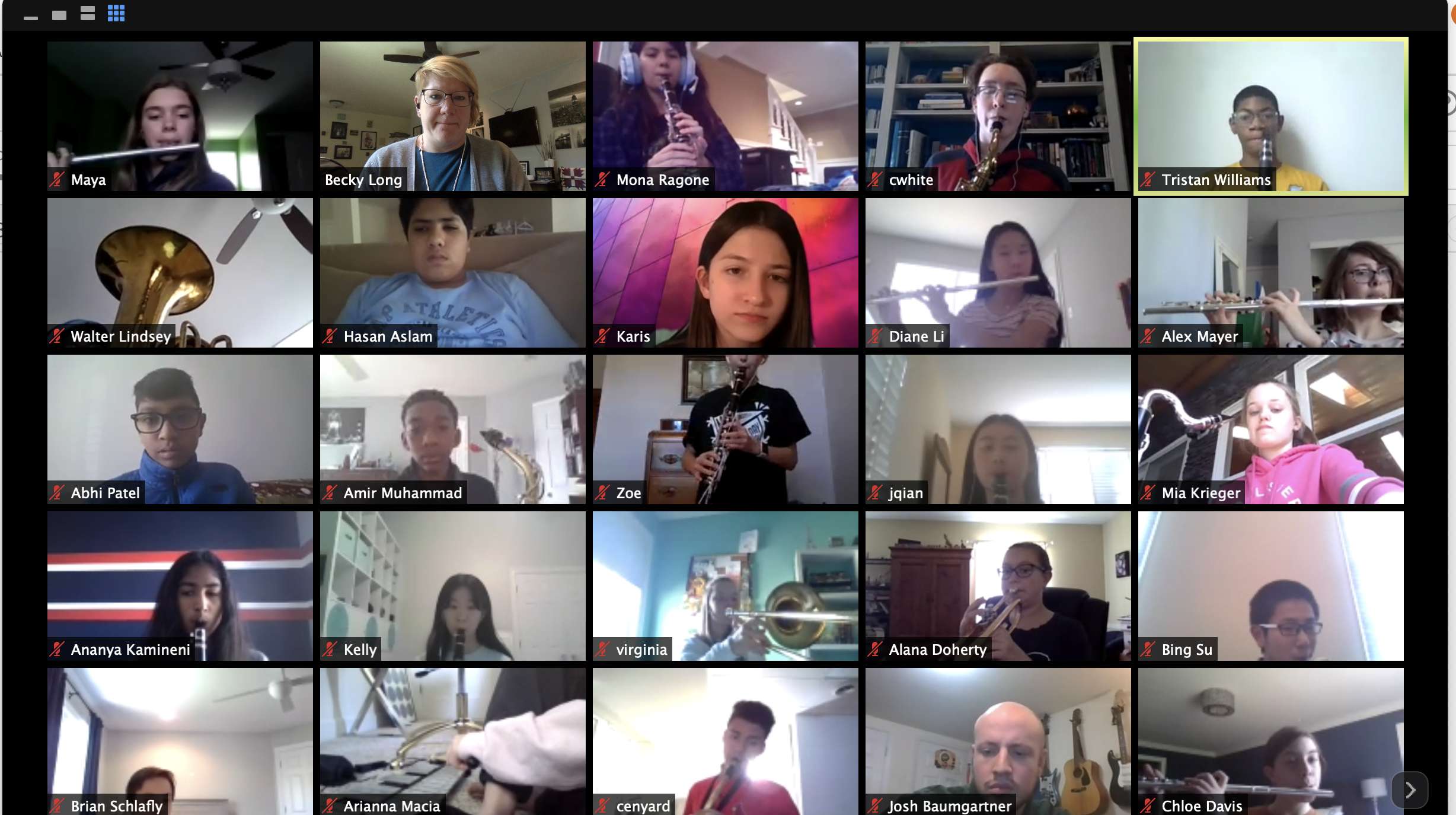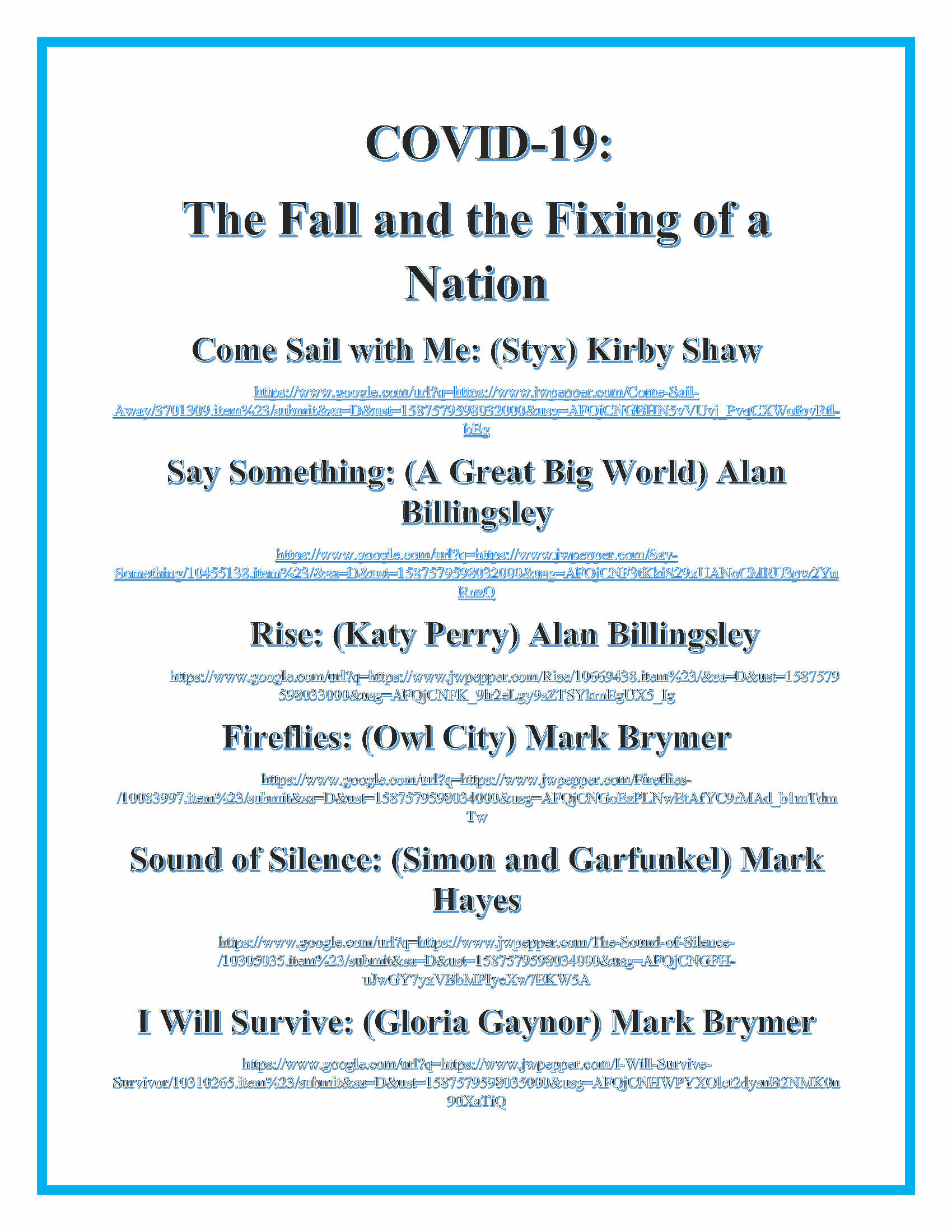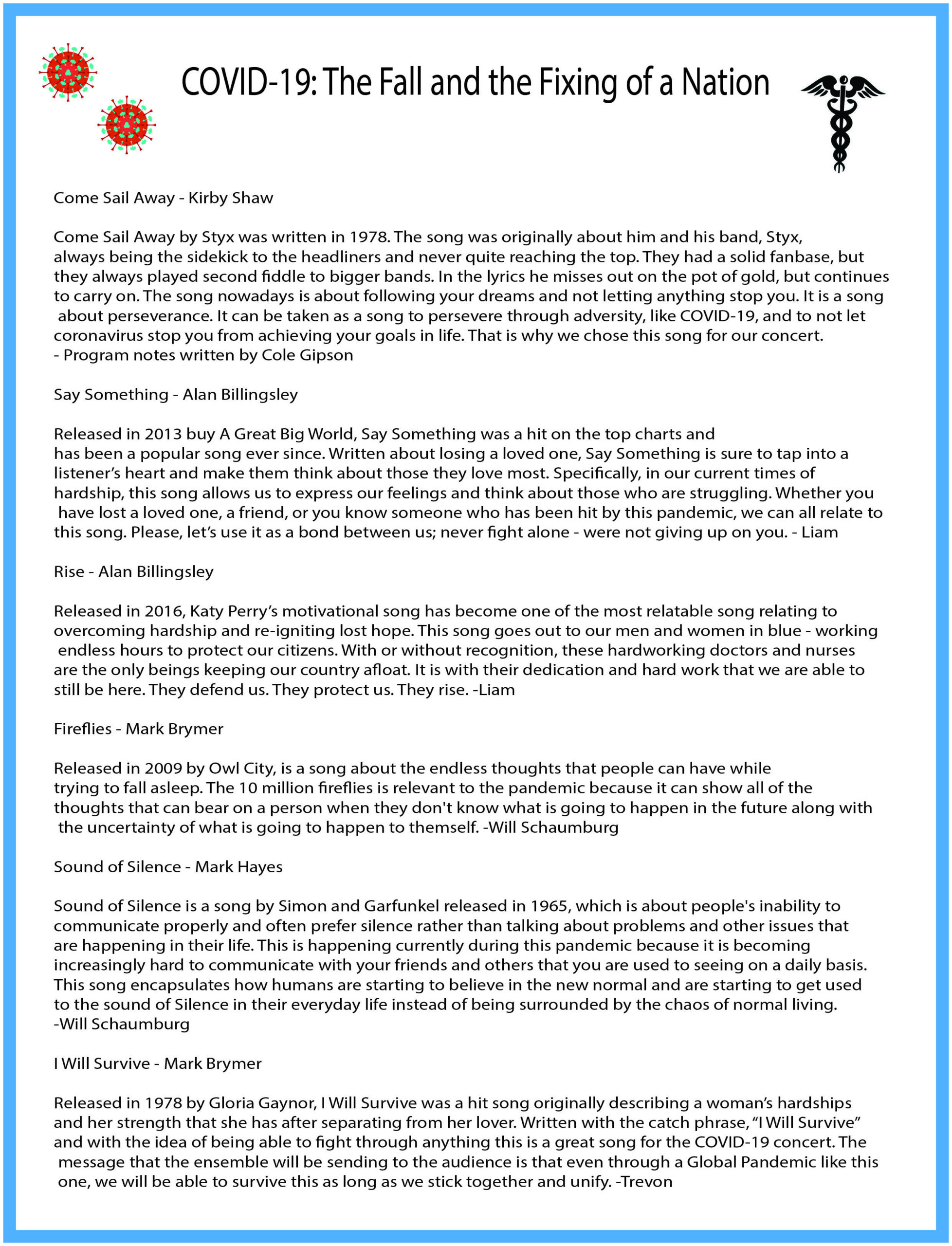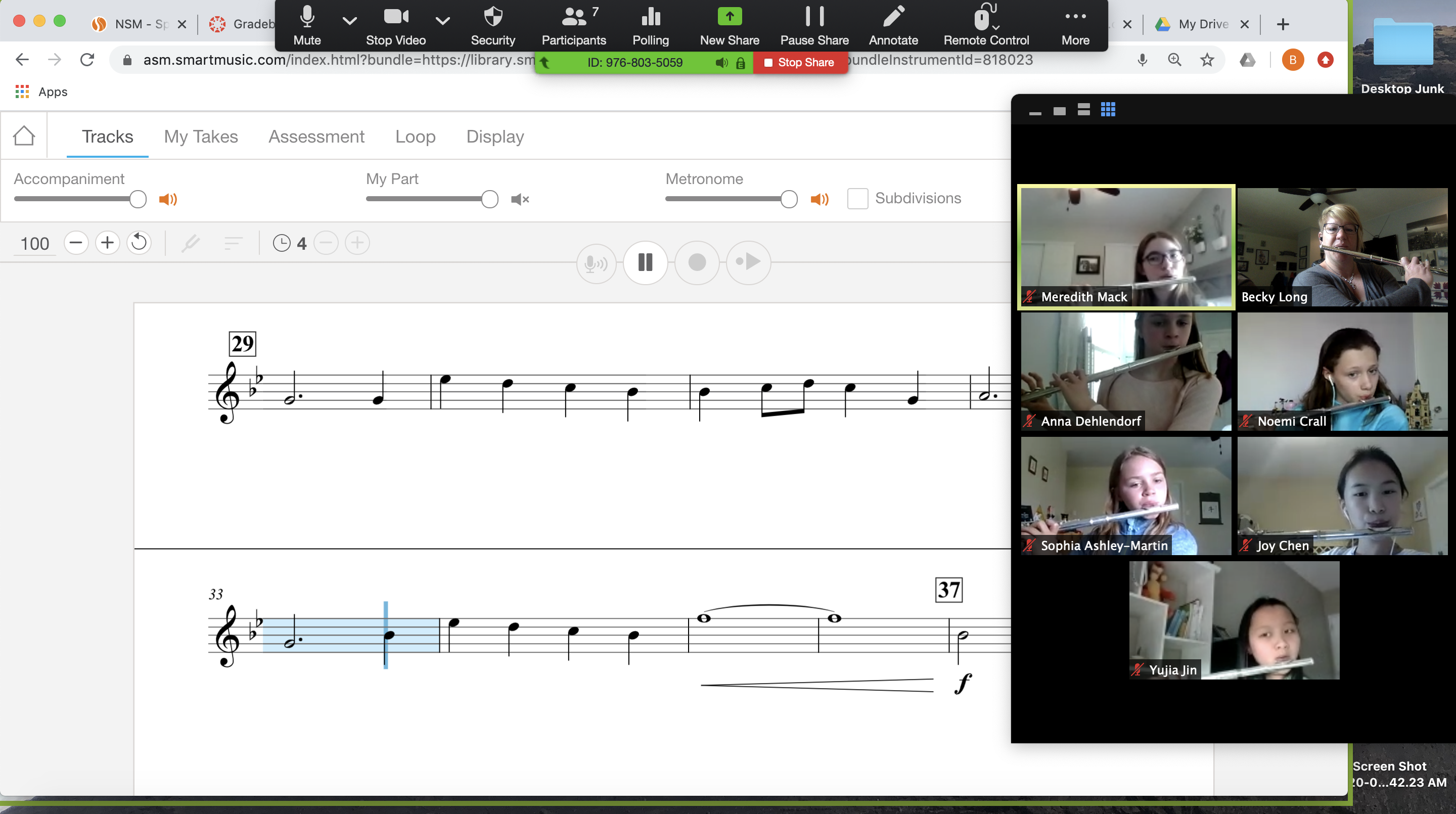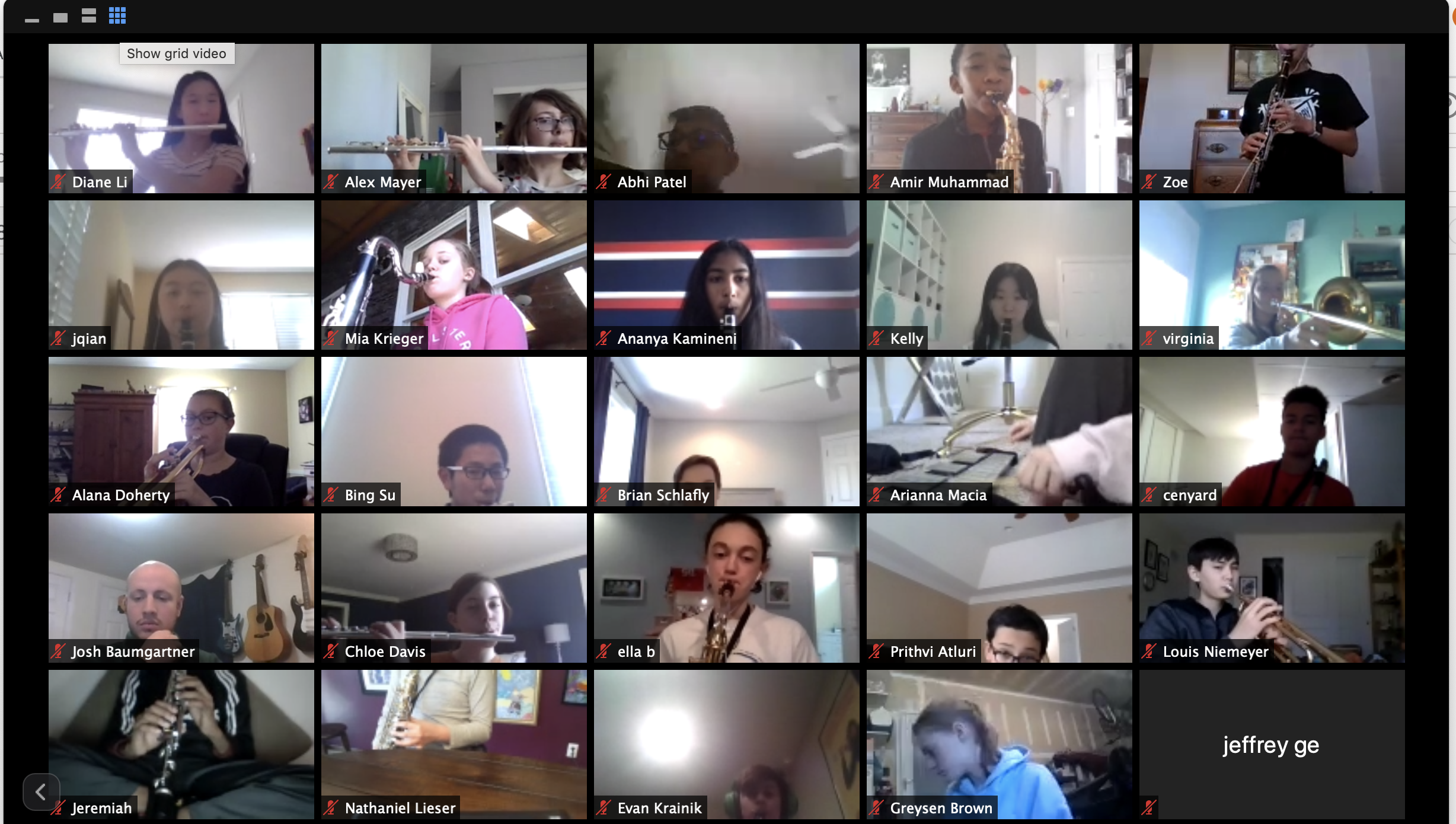Music at MICDS doesn’t stop just because we have moved to distance learning, thanks to our creative music teachers!
Lower School
Ms. Barb Spieler, 1st-4th Grade Music Teacher, and Ms. Kathy Novell, JK/SK Music Teacher, have been recording videos of their lessons. Each grade level receives one recorded lesson per week on a topic such as instruments of the orchestra, how to beatbox and singing games they can play at home. Each grade level also receives a « Music Activities Grid » that gives nine choices for enrichment activities and includes links to resources. Students record their responses and their parents send them in via SeeSaw. One example is a video of a piece they have created in ABA form, using percussion sounds they have found at home. The students are getting creative with found objects, making music in unique and creative ways. “We are all using technology that wasn’t really designed to deliver instruction in this manner,” Ms. Spieler said. “It has definitely been a challenge.”
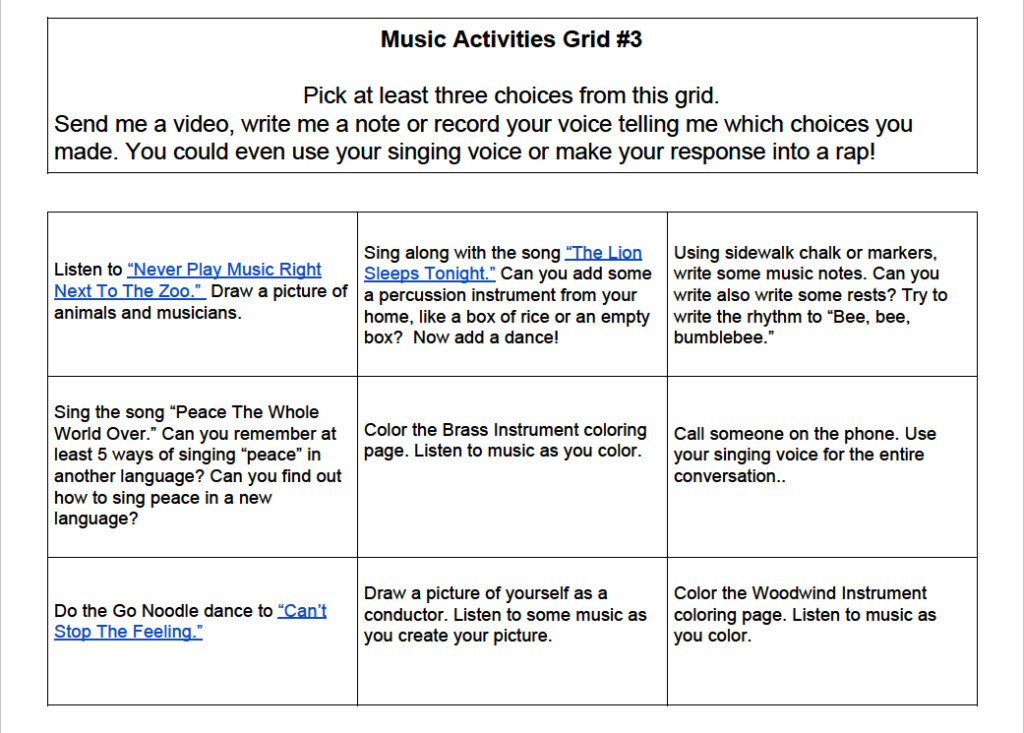
Middle School
The challenge continues in Middle School, but Middle School Choir Teacher Jason Roberts has been tackling it with his usual energy. “First of all, my goal each day is to give the kids two to three musical things that they can experience, and for a part of that experience to be something fun to visit or interact with,” he said. “Because music literacy and language is important to me and the continued growth of any music program, I have invested time with Sight Reading. As the vocal teacher, I also want them to get a vocal warm-up and stretch in their voice each time we have music so I assign warm-ups for them to stretch and sing with. And then finally I usually find some fascinating musical TED Talk for them to experience that is worthy of their time.” His classes have learned about music and brainwaves, discussed movie soundtracks, and experienced a beatboxer concert while having a camera down his throat to show the mechanics of the voice. Most recently they enjoyed some a cappella music from Bobby McFerrin. Roberts also records himself singing and playing the piano so students can access these lessons at different times, working on sight reading and warm-ups on their own.
Upper School
Upper School Choir Teacher Dana Self is also working on creative ways to teach music online. His senior choir students recently collaborated to create a video of one of their Spring Pops Concert pieces, where students all used the same base track and individually recorded themselves singing. They sent their videos to Mr. Glen Williams in the Marketing and Communication Department, who synchronized the clips to create a thrilling ensemble performance.
« One thing we don’t have the opportunity to do a lot of during the course of the school year is stopping and listening,” said Self. “We’ve been spending ten minutes or so each class period listening to a performance by another choir, whether it be a high school choir, college choir, church choir or community choir. We can learn so much just by stopping and listening. The students reflect upon the performance, discussing the intonation, rhythmic accuracy, stage presence, etc.” After two weeks of listening to pieces that Self selected, each student spent some time exploring videos on their own and submitted two of their favorite choral performances for Self to consider as the class’s listening pieces for the remainder of the year. “They have picked some really great stuff,” said Self. “And knowing that they have had a say in the process makes it much more enjoyable for them.”
All three Upper School choirs are currently finishing their Concert Program Project. They divided into groups of four to five students and given the task of planning their own choir concert. They were charged with selecting a theme for the concert—some of the themes include Fairy Tales, Inspire Me, Decades, Around the World, Blast from the Past, The Zoo, Reunion, Down on the Farm, Seasons and Night at the Movies. The groups were tasked with using the online catalog of a music retailer to select six to seven songs for a 20-25 minute concert. They were each given a « choir » of 80 singers and a « budget » of $1200 for their concert. The final step was to produce the actual program, including the title and composer, prepared concert notes, and full-length listening tracks of each song. Next week the groups will be paired together to present their concerts to each other. “Students couldn’t believe how much sheet music cost and how quickly they spend their budget,” said Self. “Not only has it given them a greater appreciation for the legwork that goes into each and every performance, but it has provided me with an arsenal of new music that I can consider for programming in the future.”
Finally, each choir continues to work on sight-singing, even through their time away from each other. We are currently completing Round One of the MICDS Sight-Singing Bee. The winner will receive a trophy and their name will be engraved on a plaque in the choir room. Round Two will also be open for students, family, friends and teachers to observe on Zoom.
Mrs. Becky Long and Mr. Josh Baumgartner, our instrumental music educators, have also adapted their teaching to an online format. What helped the transition was that the band program had already been using the SmartMusic program, which allowed students to practice their pieces at home while “accompanying” the rest of the band. SmartMusic now enhances our distance learning program in several ways. Long and Baumgartner vary their instruction by skill level, which generally falls along grade levels. In sixth grade, students are divided up into like-instrument groups and attend lessons in break-out rooms. Sometimes the band teachers play along, and sometimes recorded music lends a hand. Screen sharing allows Long to show several angles while she’s playing, affording students an opportunity, for instance, to “look over her shoulder” as she plays percussion instruments.
Eighth graders play “together” as much as possible, using Smart Music to supplement their learning. They turn in recordings of their individual pieces for teachers to monitor and assess. “We’re really excited to see some students improve and grow with their skills,” said Long. She credits the SmartMusic tool with helping drive student practices, and wonders if perhaps having additional time at home is contributing to increased practicing. She’s thankful the MICDS band program launched SmartMusic earlier in the year. “We worked out all the kinks, so it wasn’t anything new when we began distance learning,” she said.
The seniors in the band program have been busy working on solo performances and assembled an ensemble, much like the senior vocalists who produced their Spring Pops song. Check out their CODASCO rally song, distance learning-style!
The band teachers continue to foster a spirit of community and family, too. Last week they hosted an online Bingo game, inviting all band members and their families to log in and play. Long sent out PDFs of Bingo cards and students printed them out or played along on digital devices. It was a wonderful gathering of students from every division and their siblings and parents, and even a few pets. This week, band students in both Middle and Upper School logged onto Zoom for a virtual concert. A song was shared on Zoom via SmartMusic, and each student played along from home. Parents and grandparents were logged in for the event, along with Head of School Jay Rainey, and dancing broke out among the participants when the Upper School band played Hey Baby. Long and Baumgartner closed the virtual concert by recognizing seniors and students who achieved recognition throughout the year, and the comment section was full of cheers and support among students and their families. Congratulations to these seniors:
Louis Armstrong Jazz Award – Austin Stoddard ’23
James Andrew Beneke Band Award – Kyle Fehr ’20 and Renee Stanec ’20
John Philip Sousa Award – Alex Migala ’20
A heartfelt thank you to all of our wonderful music teachers for keeping our students engaged and learning this incredible art form during distance learning.
